CABO VERDE - GRI GRI
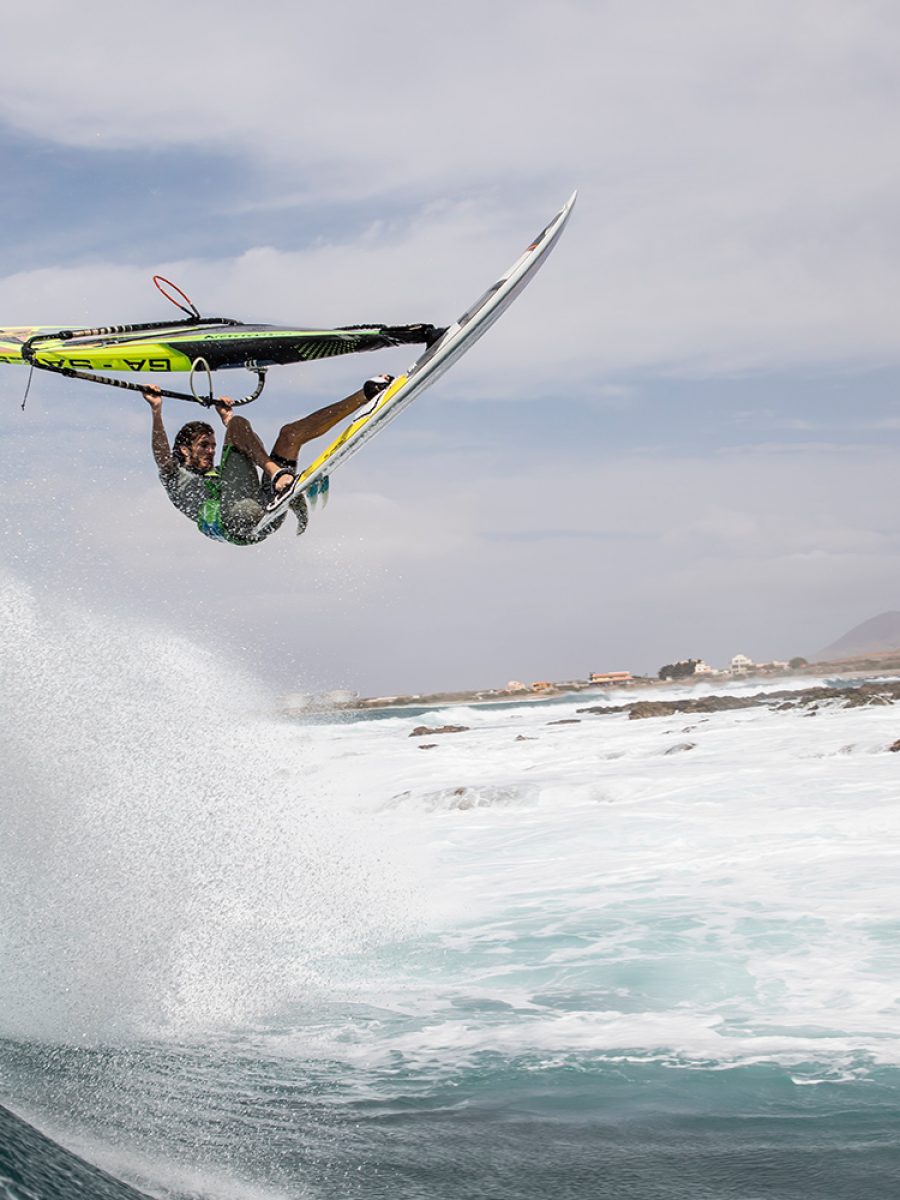
When a trip starts bad, it sometimes only gets worse. Graham Ezzy reflects on a recent trip to the African island of Cabo Verde in the company of Thomas Traversa where he found wind, waves and the ironic meaning of ‘Gri-gri’.
Words Graham Ezzy
// Photos Pierre Bouras/Liquideye
Originally published within the September ’17 edition.
Thomas Traversa drove my rental car through the crowded Marseilles traffic, weaving between cars and loudly cursing the van driving slowly in the left lane in front of us. The other 4 passengers were quiet. I felt like a silent child driving alongside an angry father. Kathrin, my girlfriend, sat in the backseat and so did Sophie and Lola, Traversa’s fiancé and 2 year old daughter. We drove to the airport to catch a flight to Sal, Cabo Verde for a forecasted swell. This was my first trip with Traversa, and though I consider him a friend, he is also an idol.
TRAVERSA – THE MASTER
Traversa is a windsurfer’s windsurfer. He is not as flashy as Marcilio Browne or Philip Köster. Traversa’s mastery is more practical, less for show. He is the best big wave rider right now in our sport. He hits the lip on waves that the rest of us respect enough to leave alone. He is a master of the fundamentals: he always catches the best waves, sets up in the right spot, and times his board with the flow of the ocean. His small body (63kg) results in a light, slidey style that uses the power of the swell to guide him. I’m 5 years younger than Traversa, and growing up, Thomas was one of my inspirations. I was impressed by his ability to adapt to any new spot in minutes.
CHECK-IN
We arrived at the airport with just less than 2 hours before our flight, more than long enough I thought. I collect air miles on Star Alliance; I travel a lot, and I like the game and perks of status. Traversa, I feel, is too cool for an airline loyalty program. No single airline can bribe him. Traversa’s loyalty is not for sale. When we showed up at the TAP counters, the regular line was full of people snaked back and forth. The elite line only had 1 person. I told Thomas that I could get our gear on the plane for free – we each had 2 board bags. Thomas replied: “No you can’t. Not here in Marseilles. You pay what they say.”
“Watch me.”
“No. You can’t. I will just pay and go through. I hate the stress of not knowing what they want to charge.” “Trust me,” I said as I completely misjudged the situation and made a mistake that haunted me for the rest of the trip. I edged in front of Thomas in the elite line to make sure I could speak with the TAP woman first. The guy in front of us had just paid 90 euros for each board bag. I had to prove to Thomas that I could get his board bag on the plane for free. I am proud of my system of negotiating the board bags, not because it saves money but because it comes from an understanding of psychology. A few years ago, I realized that the airlines don’t have clear, well-defined rules for board bag fees. The person behind the desk defaults to the highest amount possible so that they don’t get in trouble for under-charging. The goal is to make her feel confident and empowered enough to give the lowest possible price. This time, the woman didn’t want to give anything away for free, but she was not totally convinced on the rules (it’s hard to be clear on the rules when clear rules don’t exist). She left the desk to talk with her supervisor. Traversa’s face could not hide his annoyance that I had complicated and lengthened our check-in process. He left to get a coffee. My girlfriend crossed her arms in disappointment. My vanity was ruining everyone’s trip. Kathrin and Sophie are both German, and they talked between themselves. I was left alone at the counter to reflect.
SPREZZATURA
For years before I knew Thomas, I considered him the perfect example of ‘sprezzatura’, which is an Italian word that means, “practiced carelessness”. Sprezzatura is at the core of cool – mastery without even trying, winning without even wanting it. In the age of Instagram and Crossfit, sprezzatura is rare. Instagram, especially pro windsurfing Instagram, is full of #training, #workhard, #inspiration. Crossfit is about training for the sake of training, trying for the sake of trying. Traversa, I thought, embodied the old-school cool, winning a world title seemingly by accident. He seemed like the kind of guy who, if he were to post any photos at all, would post a photo smoking a cigarette rather than a photo running (#sprezzatura). I’d heard so many stories about Traversa that turned him into a legend in my mind: showing up at the airport for a windsurfing travel story with his clothes packed in a black trash bag despite being sponsored by Quiksilver; 4×4’ing up a steep hill in Chile, barely making it to the top, then realizing that a board bag had fallen off, and responding “Just leave it.” But it turns out I knew the legend, not the man. Traversa the man is more complex, more emotional: as men tend to be compared to legends.
THE WAIT
Ten minutes had passed as we waited for the TAP representative to return. Five more minutes passed. Thomas came back. He talked to Sophie angrily in French – about me. I don’t speak French, but it is pretty easy to tell that you are the subject of an angry monologue 2 metres away. And still we waited for the lady to return. Lola, the Traversa baby, started to cry. Still we waited. At this point, I didn’t care about free bags. I wanted to tell the lady just to charge us whatever, anything. But still we waited. Traversa went to stand in the regular line, which was even longer than when we had arrived. He didn’t look at me. I knew that I had disappointed him. Somehow I still felt like a child. Traversa hates waiting, I could tell. It reminded me of being picked up by my dad after school to go windsurfing. The last class ended at 3:00 P.M. and if I arrived at the road a second after 3:05, my dad would be grumpy and silent on the drive to the beach. Still we waited for the TAP rep to return. Kathrin was angry with me too: “We can’t travel with other people like this. They have a baby and now you’re making them wait. Thomas just wants to relax and you’ve stressed him.”
Still we waited.
When the airline woman finally returned, I didn’t even want to go to Cabo Verde anymore, let alone ask about the cost of the excess baggage. It made no difference when she tagged our bags and handed over the passes without asking us to pay anything. Family Traversa and family Ezzy went in different directions, not speaking to each other. After security, we only had time to buy a bottle of water before the plane started boarding. I felt small and still like a child, but yet I still did not fit in the cramped space of the economy section of a modern airplane. Kathrin didn’t talk to me but instead talked 5 seats up the aisle in German to Sophie. I knew I needed to ‘mea culpa’, trying to express my genuine unhappiness with the situation when I knelt down by Traversa’s seat to apologize. He was too cool to even remember that he had been upset. And then we took off. Maybe there is some truth to the legend…
THE CULT OF CABO
In Cabo Verde, the four of us stayed in downtown Santa Maria, and our photographer Pierre stayed in the outskirts of town, in an area where paved roads give way to dirt and packed sand. Stray dogs poked noses into piles of trash; I would have been scared of them had they not been so small and starved. Whatever charm exists in Santa Maria – live music in the air, restaurants, cobbled streets, any street at all – does not exist here. Pierre’s neighbourhood is the ugliest kind of Africa: European apartment boxes sticking out of the dirt with thought neither to anything traditionally African nor European civil planning.
Cabo Verde exists as a legend in the collective mind of windsurfing. Who could erase the images of the 2007 world cup wave event from their memory? Kauli changed boards overnight when he debuted the new-school twin fin against Angulo in the final. Angulo won the event, but Kauli won our hearts.
It is impossible to go to Cabo Verde without expectations of great waves. For what do expectations exist if not to be destroyed like waves on the shore. We went on a forecast, and 30 Spanish windsurfers showed up the same day. I like all of them as friends, but if there is one thing that ruins offshore, down-the-line waves, it is too many windsurfers. Actually, kiters are worse. But 30 extra windsurfers are pretty bad.
FORECAST
Our love of forecasts fascinates me. We treat the models like gods who know the future. Of course, they are not gods and they can be wrong, even when we are certain. The sea is a fickle mistress. We leave our wives for her, we give up our jobs for her; yet, her passions are handed out capriciously. Our first day sailing was basically flat. Only in the evening did waves start to show up in Ali Baba. The wind was so light that even Thomas – the most efficient 63kg sailor on the world tour – struggled to catch waves. This meant that I faced a near impossible task. With my Christmas weight, I was about 20 kilos more than Traversa. That is like Traversa carrying a 5 year old child on his back. The sets were too infrequent and the wind too light. Sinking so deep that the water came up to my waist, I balanced on my board as I watched Traversa catch small waves on the inside. Finally, after an hour of balancing, a set came. I caught it way too deep. I saw the wave rising in front of me. I knew that either I had to outrun the wave’s wall or risk being caught behind the whitewater. I hit an air and landed, but the wave was breaking too fast for me to get to the open face. I tired to push through the whitewater, but the next wave forced me onto the lava rocks. Such was the start to my Cabo Verde trip. The last time I was in Cabo Verde was the 2009 PWA World Cup. I won the super-session with the first carving taka in competition, but I finished last place in the main elimination. Who beat me? – Traversa. The wind was light, and he sailed circles around me – literally – and caught all the good waves.
TAXI
The next day, I woke up lethargic and in pain. Breakfast was ‘Catchupa’, a slow cooked Cabo Verdian dish of corn and whatever ingredients are at hand – beans, pork, and sausage. Ours was topped with a fried egg and it reminded me of the Ropa Vieja found in the Canary Islands. Thomas loved it. I was less enthusiastic. Traversa did not want to rent a car, insisting that taxis are the best way to get around Sal. This meant that we had to find a taxi big enough to take 5 adults, 4 board bags and a baby. Traversa and I split up, wandering the streets looking for pickup trucks that might happen to be taxis. Kathrin was still grumpy with me for making the check-in process more difficult when we left Marseilles. And she let me know that she was not happy about looking for a taxi when we could have been doing something more productive – like windsurfing.
We finally found a guy in a Toyota pickup that looked like Idris Elba. He was already booked on two airport rides for the day, but he said that he would drive us. He drove over to a group of men standing around trucks and gave two of them the time and place for the airport runs later in the day. He didn’t smile. He was from Espargos, the other town on the island of Sal and the island’s capital. Santa Maria feels the touch of Europe – Italian restaurant owners, signs in English, shops set up to sell talismans to tourists. Espargos has none of that. He said, “Santa Maria boys don’t like work. Party boys.”
PAIN
Punta Preta was flat. The swell was more northerly than forecast, which meant that we had to drive up the coast to Ali Baba, where we were met with strong almost straight offshore winds, medium swell, and lots of kiters and windsurfers. The wind picked up as we rigged. I was overpowered on a 4.7, muscling the swarm of other people for waves. My body felt terrible – my lower back ached so deep that I wondered if my organs were failing. Then my stomach tightened. I sailed into the beach and lied in the sand on my back. I wondered where Kathrin was and what was wrong with my body. In answer to my thoughts, she walked over to tell me that she did not find my current laziness attractive. She said that she needed to be in a relationship with someone who inspired her and that at present I did not inspire her. I struggled to concentrate on her words – my body and mind were stretched in pain.
Pierre swam out with his camera to take photos and Sophie shot video from the land. Kathrin told me that we travelled all the way from Germany to get to Cabo Verde, as if I had somehow forgotten. She said that I should take advantage of the cameras otherwise the trip was pointless. I didn’t want to go sailing, but I realized that more important than how I felt was how my girlfriend felt. And she felt that I needed to be sailing. So I went sailing. I was in too much pain to do anything worth recording, so it was a waste of time anyway. But it’s the effort that matters; it’s better to pretend than to do nothing at all. At dinner that evening, I had no appetite. I ordered a watery lentil soup while Thomas had another dish of catchupa. I could only handle a spoonful. In the middle of the night, I woke up with my stomach muscles gripped tight. In the toilet, I threw up all the water in my stomach (there was no food). Even with an empty stomach, my body still wanted to eject its contents. The next morning, I could not get out of bed. Clearly, the gods were punishing me for my airport arrogance. My memories of the days that followed are cloudy. I could not eat, I had to force myself to drink water, and I spent most of the day in bed while Thomas rode around with Pierre going to secret spots on the north coast of the island. At the end of each day I got to see the amazing photos and videos of the day. Kathrin stayed with me instead of going with everyone else to watch the windsurfing. During my sick days, we would walk the streets of Santa Maria for as long as my sickness could bear – an hour, maybe two.
The wind whipped up the sand and dirt so that it swirled over the cobbles and around the corners of the blocky buildings. The dust and dirt and wind reminded me of some biblical scene. The island’s name, Sal, translates to salt. Just windy, dirty, sandy and salty; a dry desolate place like the punishment for Adam and Eve after they got kicked out of Eden. I hoped my comeuppance was complete.
PAIN
Punta Preta was flat. The swell was more northerly than forecast, which meant that we had to drive up the coast to Ali Baba, where we were met with strong almost straight offshore winds, medium swell, and lots of kiters and windsurfers. The wind picked up as we rigged. I was overpowered on a 4.7, muscling the swarm of other people for waves. My body felt terrible – my lower back ached so deep that I wondered if my organs were failing. Then my stomach tightened. I sailed into the beach and lied in the sand on my back. I wondered where Kathrin was and what was wrong with my body. In answer to my thoughts, she walked over to tell me that she did not find my current laziness attractive. She said that she needed to be in a relationship with someone who inspired her and that at present I did not inspire her. I struggled to concentrate on her words – my body and mind were stretched in pain.
Pierre swam out with his camera to take photos and Sophie shot video from the land. Kathrin told me that we travelled all the way from Germany to get to Cabo Verde, as if I had somehow forgotten. She said that I should take advantage of the cameras otherwise the trip was pointless. I didn’t want to go sailing, but I realized that more important than how I felt was how my girlfriend felt. And she felt that I needed to be sailing. So I went sailing. I was in too much pain to do anything worth recording, so it was a waste of time anyway. But it’s the effort that matters; it’s better to pretend than to do nothing at all. At dinner that evening, I had no appetite. I ordered a watery lentil soup while Thomas had another dish of catchupa. I could only handle a spoonful. In the middle of the night, I woke up with my stomach muscles gripped tight. In the toilet, I threw up all the water in my stomach (there was no food). Even with an empty stomach, my body still wanted to eject its contents. The next morning, I could not get out of bed. Clearly, the gods were punishing me for my airport arrogance. My memories of the days that followed are cloudy. I could not eat, I had to force myself to drink water, and I spent most of the day in bed while Thomas rode around with Pierre going to secret spots on the north coast of the island. At the end of each day I got to see the amazing photos and videos of the day. Kathrin stayed with me instead of going with everyone else to watch the windsurfing. During my sick days, we would walk the streets of Santa Maria for as long as my sickness could bear – an hour, maybe two.
The wind whipped up the sand and dirt so that it swirled over the cobbles and around the corners of the blocky buildings. The dust and dirt and wind reminded me of some biblical scene. The island’s name, Sal, translates to salt. Just windy, dirty, sandy and salty; a dry desolate place like the punishment for Adam and Eve after they got kicked out of Eden. I hoped my comeuppance was complete.
THINK MAN
The Traversa family left Cabo Verde, but Pierre, Kathrin, and I had two more days before our flights home. I still was not eating, but I felt better and I wanted to at least get one photo.
Kathrin and I rented a room near poor Pierre’s building. It was some kind of African hostel, and the room smelled strongly of iodine and rust. I could count the springs of the mattress as I slept, but otherwise it was fine—all we needed, a place to wash and sleep. Though Kathrin decided not to shower because the porcelain of the shower was so red with rust. During the day, we all went up north trying to find the last remnants of the dying swell. I sailed Coral Joule and another secret spot. But the waves were so small that they broke right on the rocks. It was scary without the thrill of riding big waves. Despite the fact that I had not eaten in days, I had fun. I found a few pockets for cutbacks and lips for airs. Windsurfing is such a strange sport. We go around and around in circles, riding the same water that keeps rising and falling.
Back in Santa Maria in the evening I wandered around the shops, feeling good enough to be out but not good enough yet for dinner. Pierre wanted to buy a ‘Gri-gri’ for Keano, Florian Jung’s just-born baby. I wanted to get a small statue for Kathrin’s father. Kathrin joined Pierre on his hunt, and I walked to the next-door store. I found a small black ‘Think-man’ statue that I liked. ‘Think-man’ is a theme in African art; a man, often abstractly represented in flowing lines and circles, sits with his hand on his chin, thinking. What is he thinking about? What is he pondering? Aren’t we all that ‘Think-man’?, pondering the why’s and what’s? As I was lost in these thoughts, the storekeeper said, “Is this your big boss-lady?” I turned around and saw Kathrin with her arms crossed over her chest. “Come on. We are not buying my dad any more of this. He has too many.” And she took my hand and walked out. Pierre had found a sewn doll ‘Gri-gri’ for Flo’s newborn baby. A ‘Gri-gri’, he explained to me, comes from African magic. They bring good luck and protection from evil.
Exhausted, we took a cab home to the outskirts of town and went to bed.
Our flight was the next day around noon, and I wanted to get in one more windsurfing session, so we woke up at 7 A.M. and found our taximan. After sailing, we turned up at the airport salty and still wet. We munched on bread and chocolate. I still had not eaten a meal since being sick. It was at the airport that Pierre realized that he did not have the ‘Gri-gri’. He must have left it in the taxi the night before. We went to the airport shops to look for a replacement but all they had was Duty Free alcohol and European chocolate. With nothing else to do, we checked in and went back home.
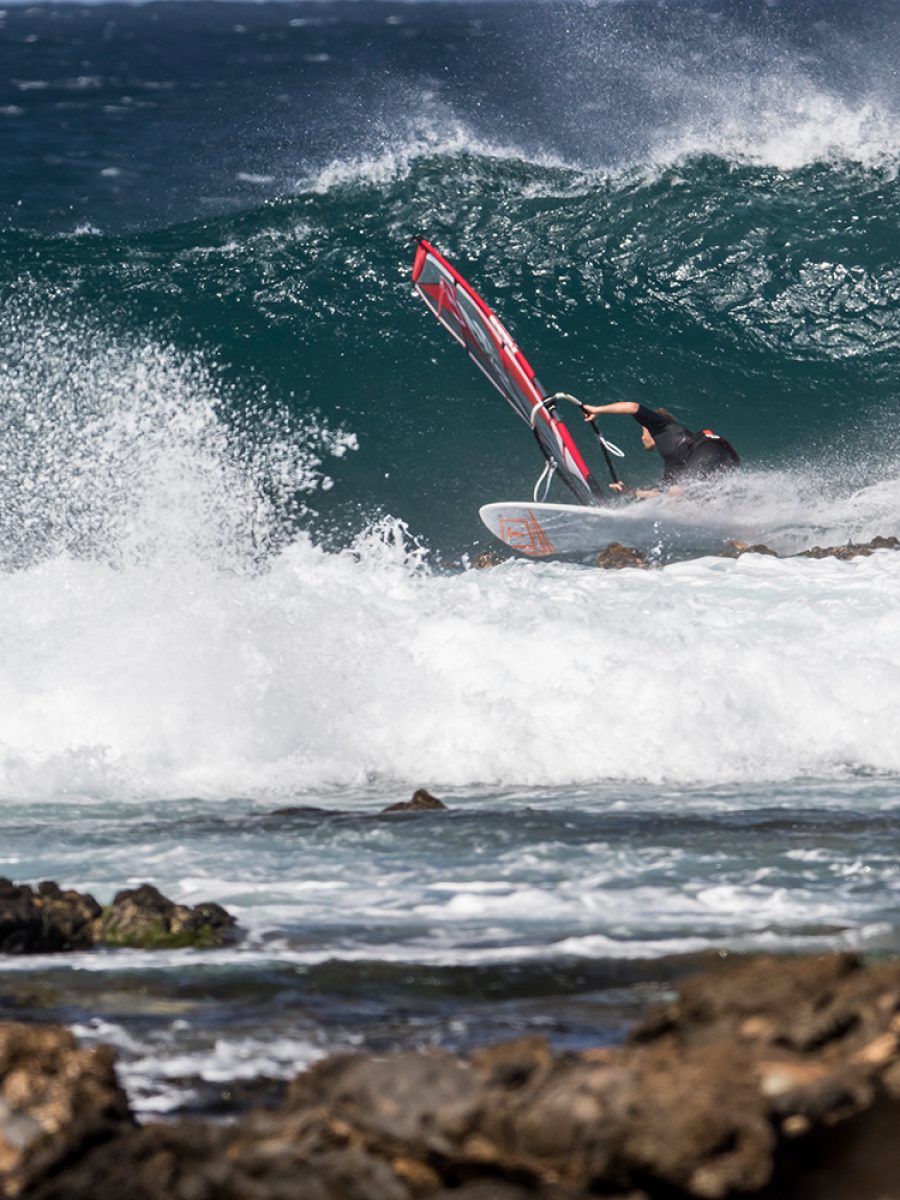
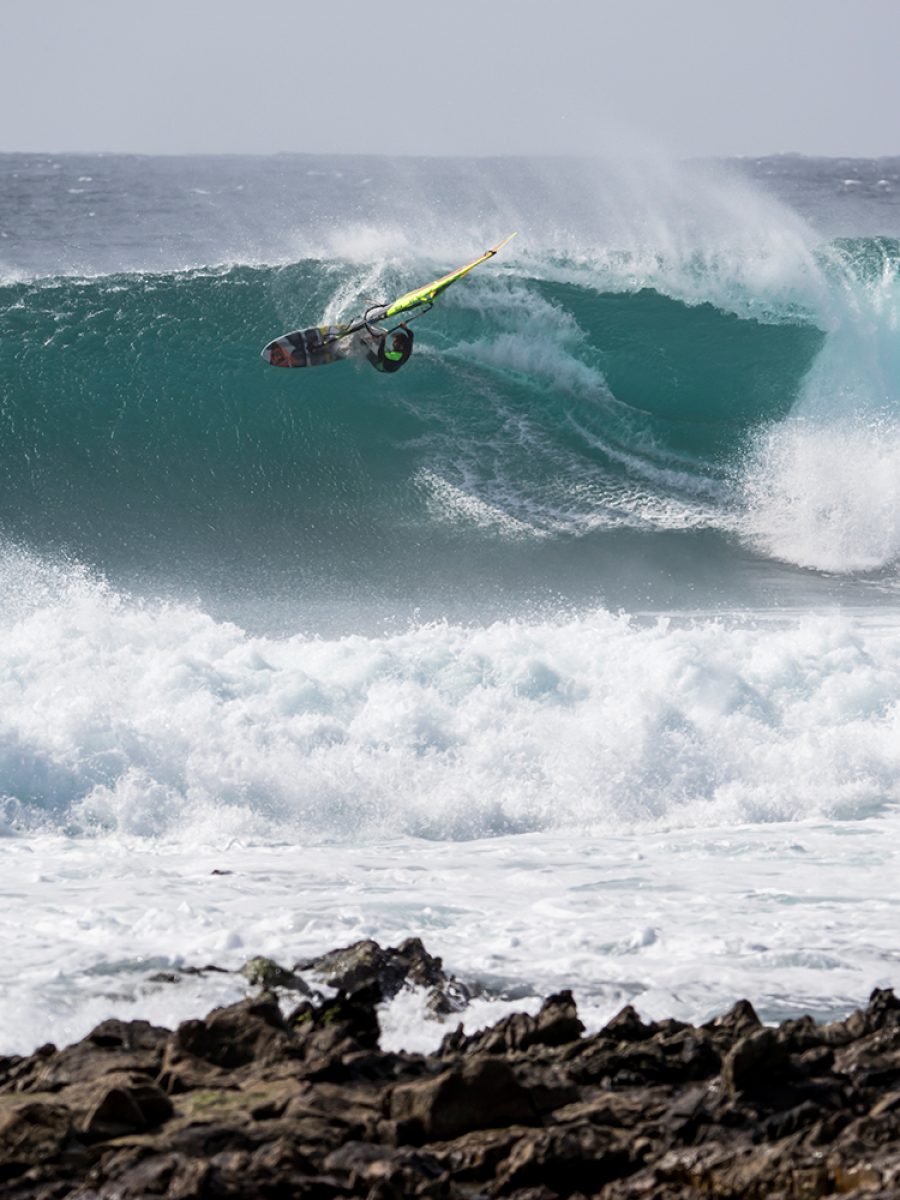
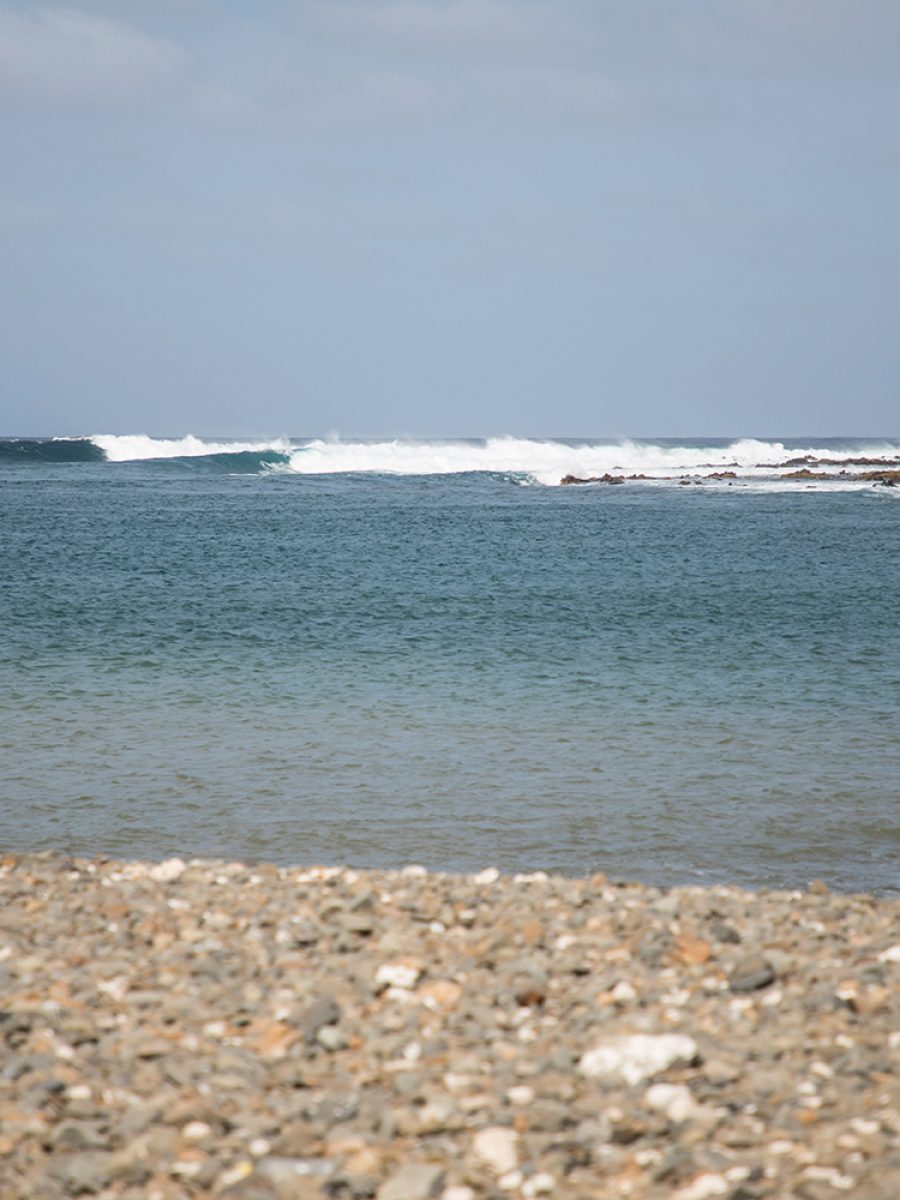
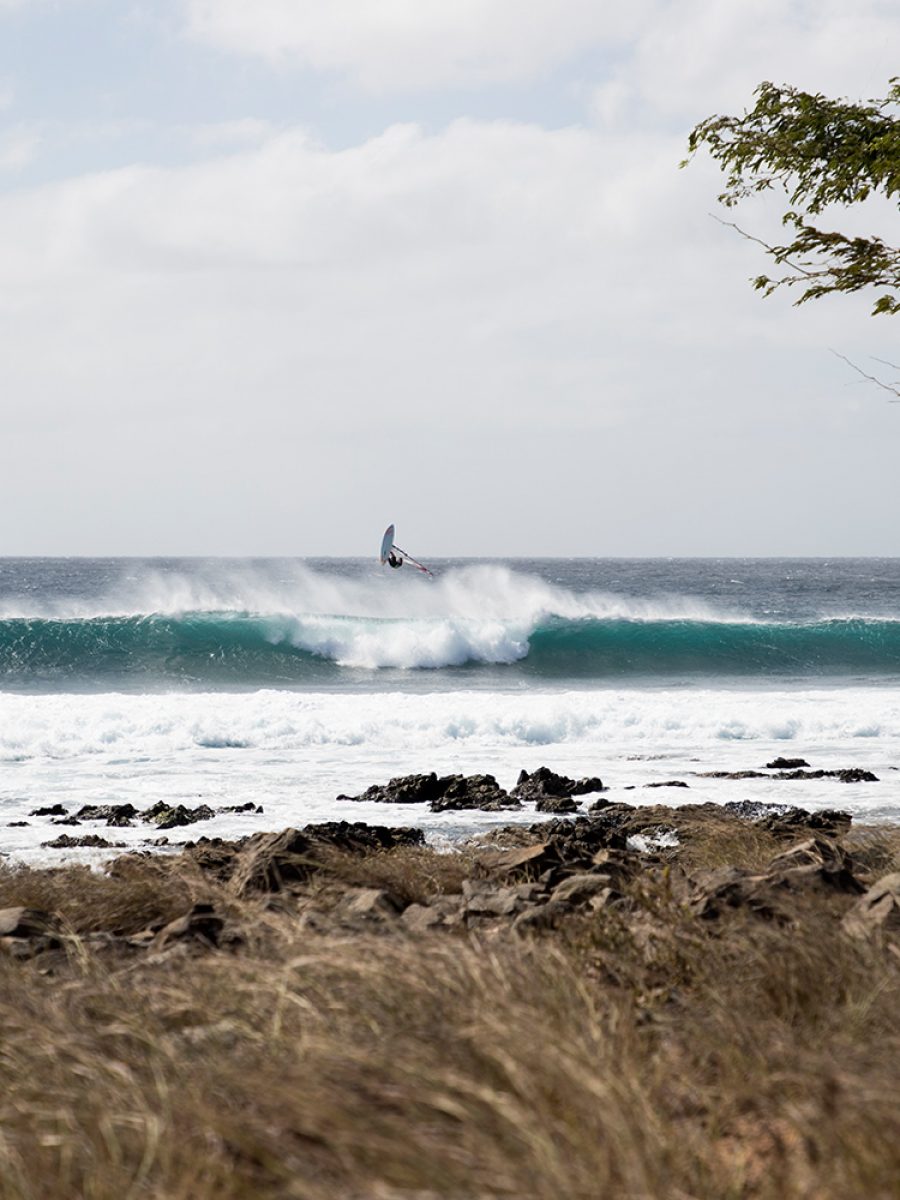
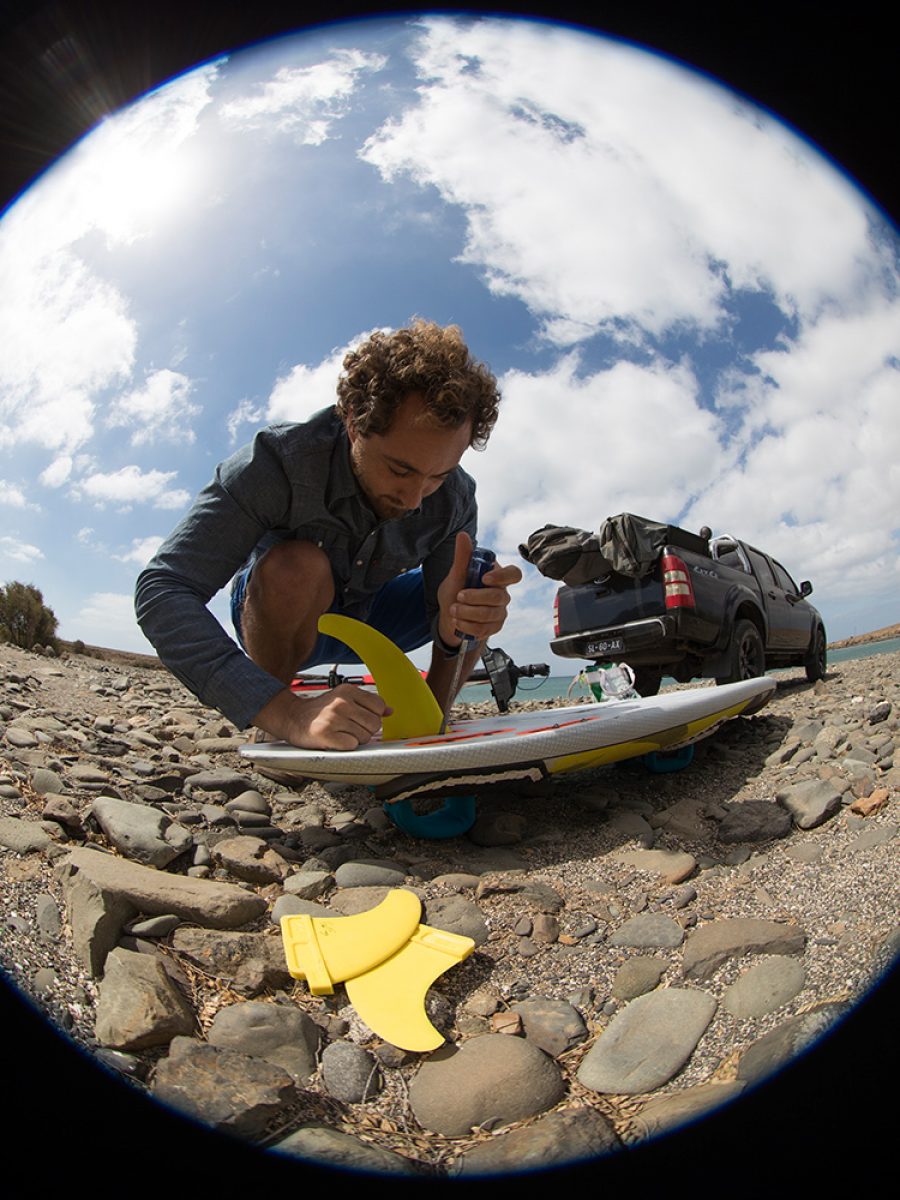
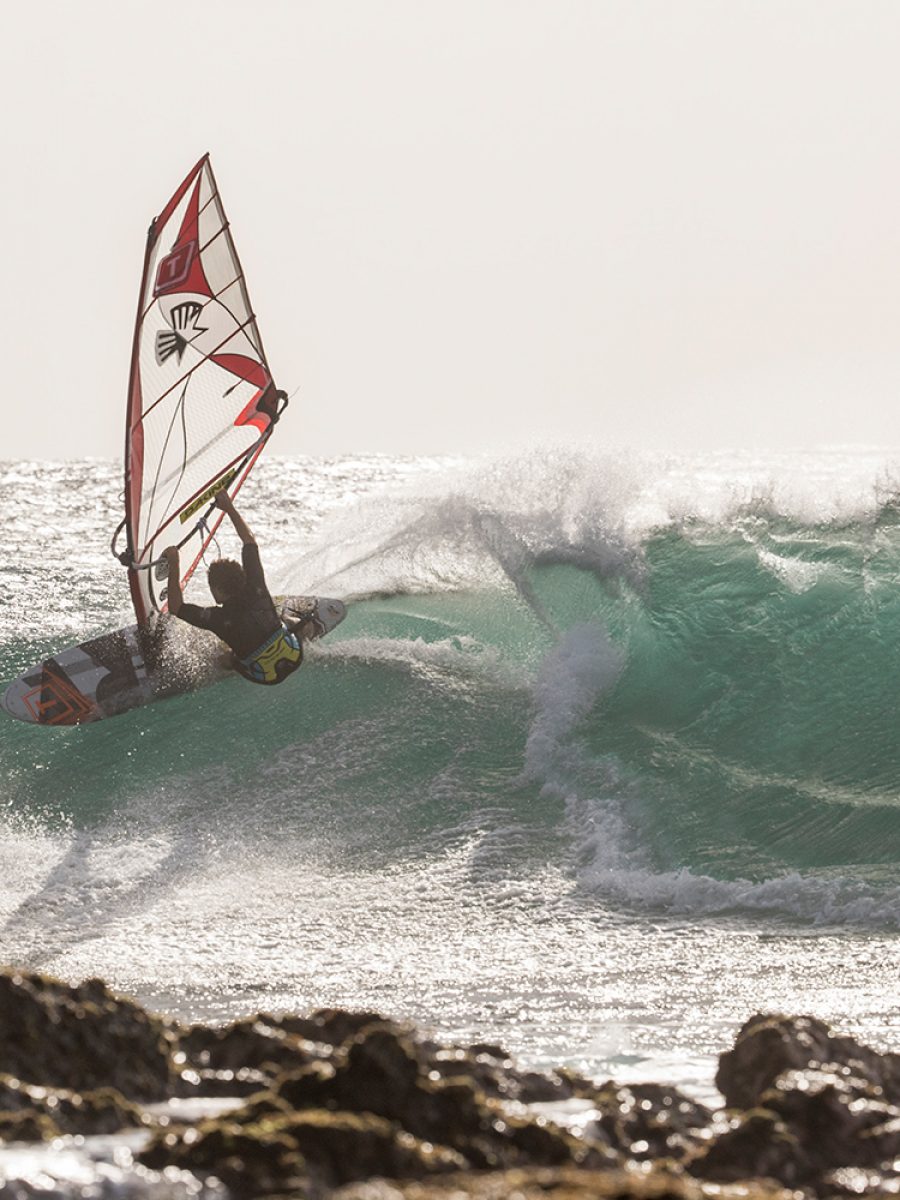

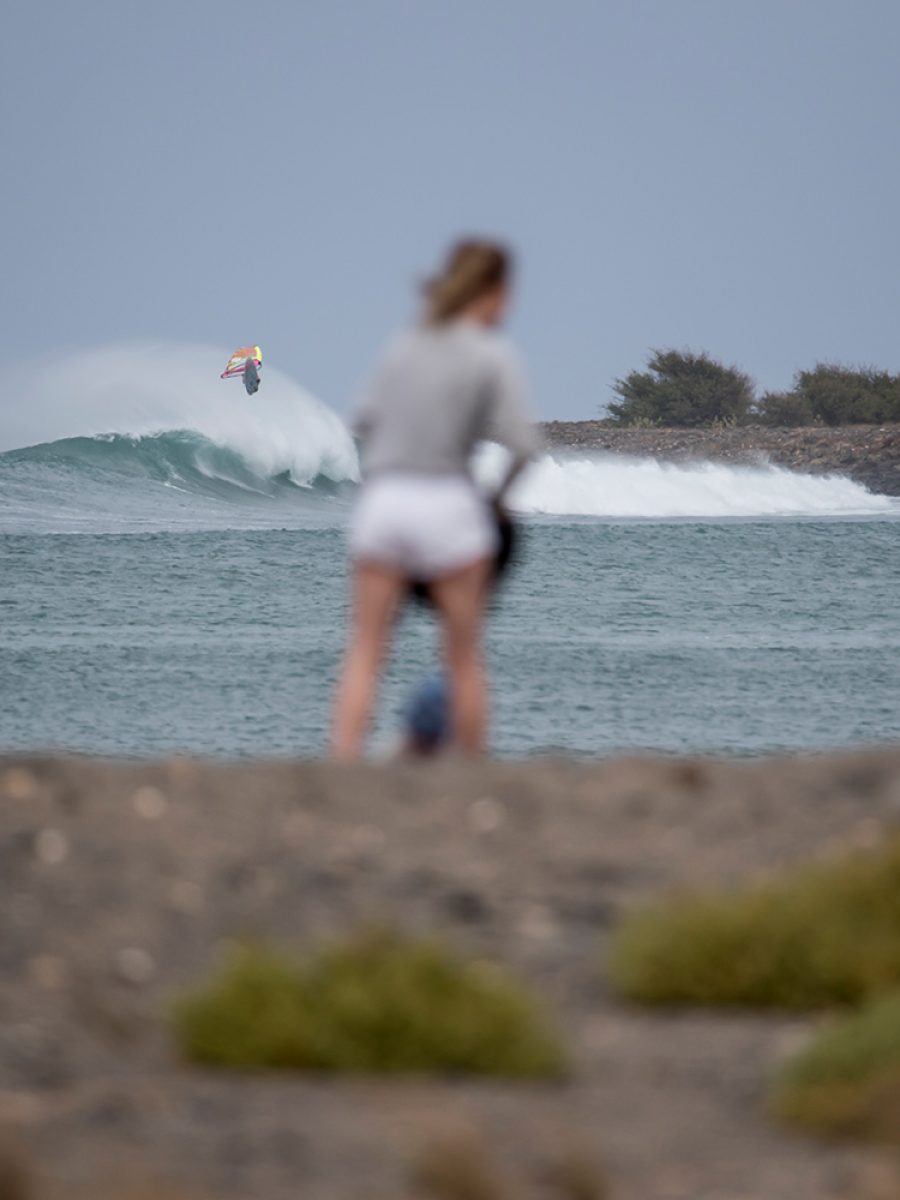
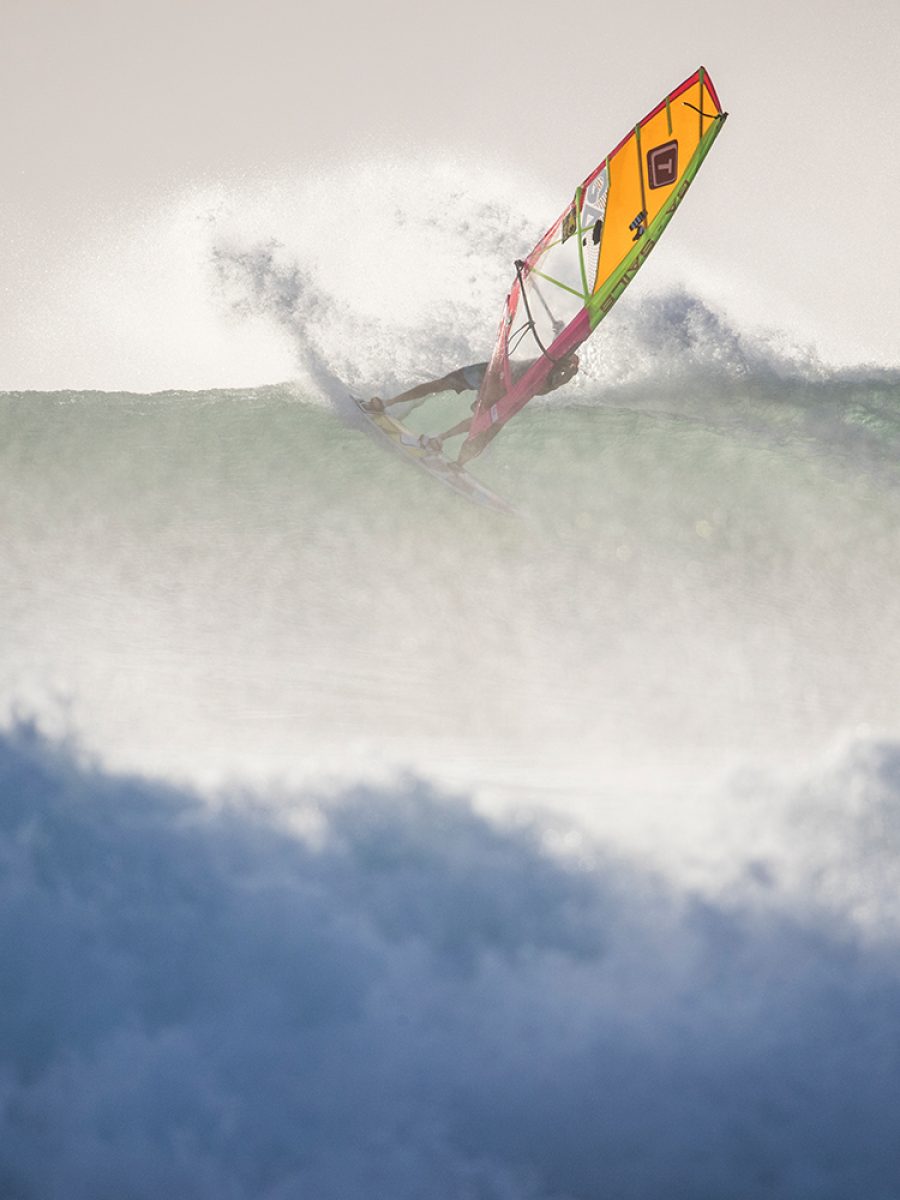
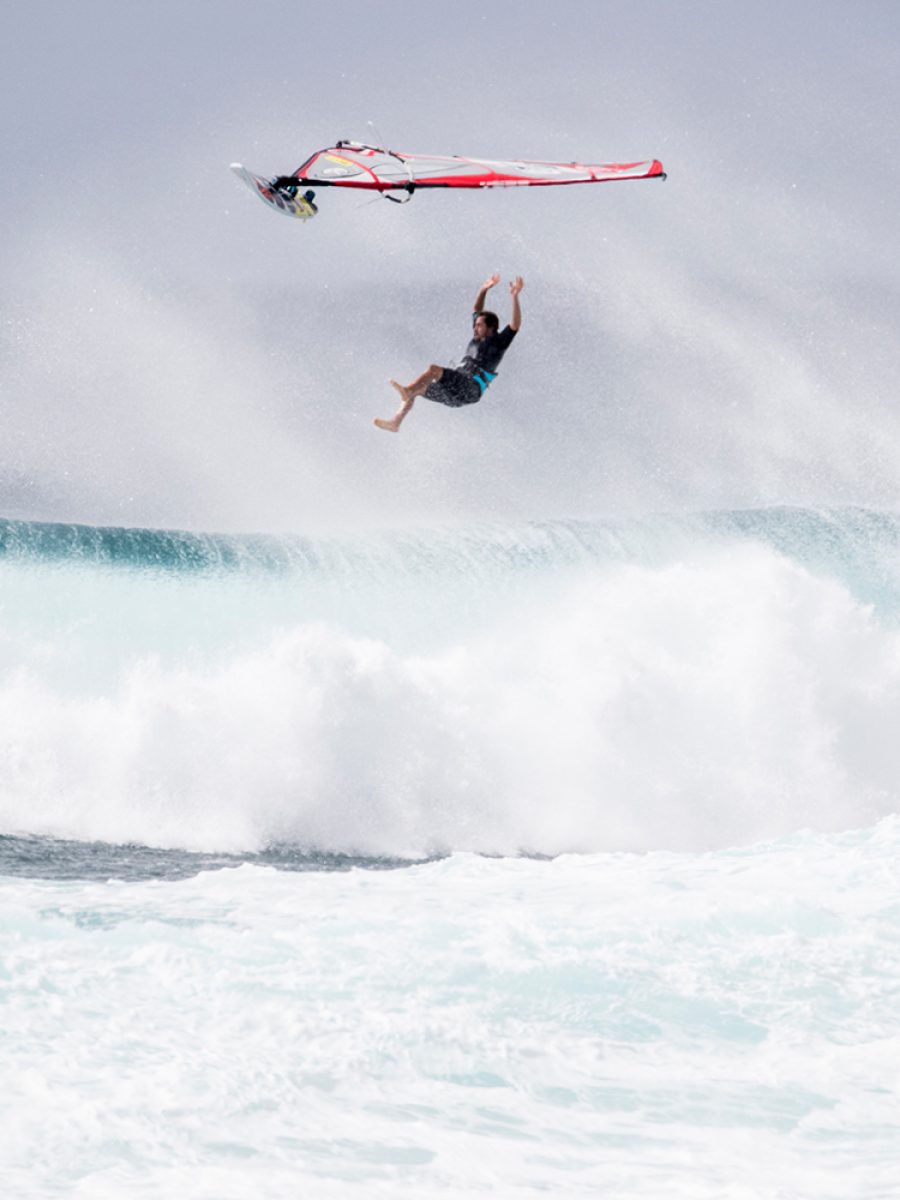
The post CABO VERDE – GRI GRI appeared first on Windsurf Magazine.